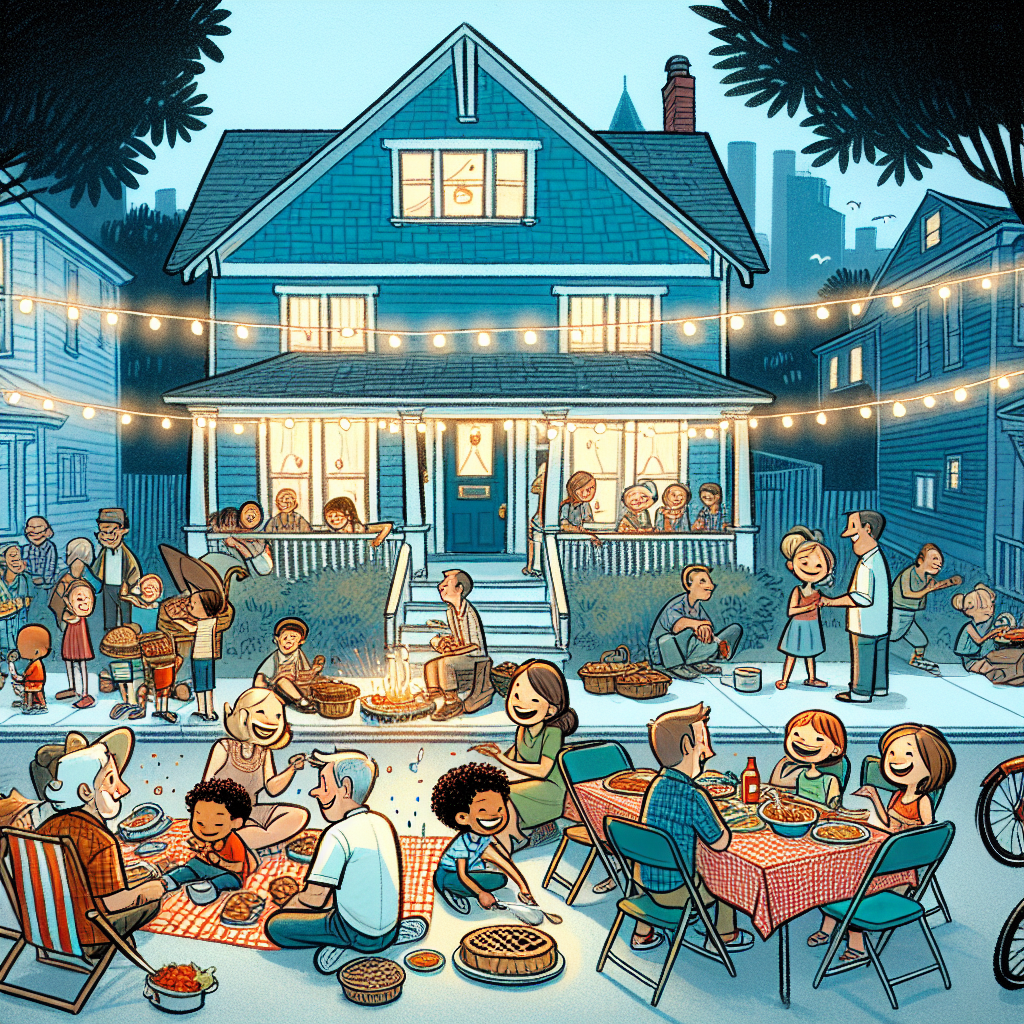“Sidewalk Supper: Rekindling Community on Maple Street”

There’s a curious kind of magic that happens when a neighborhood potluck spills out onto the sidewalk, folding chairs and picnic blankets soaking up late afternoon sun, and the scent of something sweet and smoky twisting through the air. Last Saturday, down on Maple Street, right where the old Turner’s Garage used to hum and click before the world moved on, a cluster of neighbors gathered with dishes and stories in tow. The “Sidewalk Supper” was the brainchild of Lila and Benny, a young couple who just moved into the big blue house that’s been empty for nearly a decade.
I wandered over around five, with my notebook tucked under my arm and a curiosity that felt thick enough to hold. The sprawling porch of the blue house was draped with string lights that flickered softly as the day began to dim. Beside it, a handful of tables groaned under the weight of casseroles, salads, casseroles (yes, twice), and pies that looked too pretty to eat. Kids darted between legs, their laughter rising and falling like a secret rhythm only they knew.
"We wanted to bring back a bit of the old Chesterburgh," Lila said, her hands warm even as she handed me a slice of cornbread slathered with honey butter. “Remember when neighbors waved from porches instead of screens? When coming home meant seeing familiar faces, not just your own reflection in a window?”
Benny added, draping an arm around her shoulder, “The garage was always this kind of ghost spot, you know? Creepy, cold, silent. It’s felt like something was missing from this block. We figured, why not try to fix that?”
Listening to them, I remembered summer nights from years back — the crackling of fireflies, the distant hum of a radio playing country tunes, and that odd sense of belonging when the whole block slowed down at once. Lila and Benny’s Sidewalk Supper seemed like a hopeful stitch in an old, fraying quilt.
Mrs. Henderson, who’s lived two blocks down since the fifties and who brought her famous pickled green beans, leaned over the fence to greet newcomers with a smile that could soften the hardest of days. “You can’t put a price on knowing your neighbors,” she told me, “especially when so many folks just pass through these days. It’s like we’re holding onto a little piece of the past, one meal at a time.”
I spent a while watching the scene unfold—young families passing bowls to each other, teenagers sitting cross-legged with plates balanced on knees, and the older crowd swapping stories soaked deep in nostalgia. I caught a few slices of conversation drifting on the warm breeze. Jesse, the high school janitor, was telling a story about how his grandmother used to make fried apple pies so good you could catch a whiff of cinnamon for blocks. Nearby, Marcy, who runs the corner bookstore, was quietly coaxing a shy child into speaking up about her favorite book.
It struck me then how small gestures — a pie shared, a smile passed — become the threads that stitch a community together. In Chesterburgh, a town that’s seen factories close and streets grow quiet, those threads sometimes fray but don’t break. They just bend toward whatever light we can find.
“It’s not grand,” Lila said as we lingered by the last glowing coals of a fire pit, “but it’s ours. If just one person feels a little less alone tonight, then it’s enough.”
And maybe it is.
By the time the porch lights dimmed and folks started drifting back to their cars and bikes, the air was cooler, tinged with jasmine from a nearby garden. The blue house on Maple Street, once silent, had become a beacon—its windows softly reflecting lantern light, laughter, and the slow, steady pulse of a town beating gently back to life.
